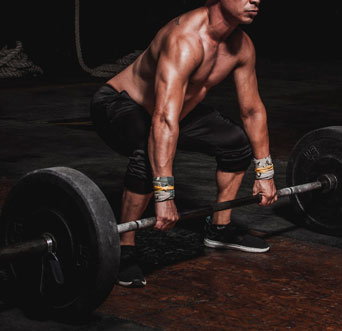Weightlifting is a challenging and rewarding sport that requires strength, technique, and dedication. It’s a sport where athletes push their limits, striving for personal bests and, in some cases, even world records.
Central to the safety and success of weightlifters is the practice of spotting. In this article, we will delve into the world of spotting in weightlifting, understanding its importance, techniques, and how it contributes to a lifter’s progress.
The Importance of Spotting
Spotting in weightlifting is more than just a safety precaution; it’s an essential element of the sport. Here’s why:
- Safety: Weightlifting involves lifting heavy loads, which can be dangerous if a lifter loses control. A well-trained spotter can step in to prevent injuries by helping the lifter rack the weights safely or providing assistance if they struggle during a lift.
- Confidence: Knowing that a spotter is present can boost a lifter’s confidence. This psychological support can lead to better performance as lifters are more likely to attempt heavier weights with a trusted spotter by their side.
- Progression: Having a reliable spotter allows lifters to push their boundaries. It facilitates attempts at one-rep maxes and helps lifters overcome plateaus by providing the extra push they need to conquer challenging lifts.
Spotting Techniques
Spotting in weightlifting involves specific techniques and protocols. Here are some key aspects of effective spotting:
- Communication: Clear communication between the lifter and spotter is crucial. The lifter should indicate how many repetitions they plan to perform and signal if they need assistance.
- Proper Hand Placement: Spotters should know where to place their hands to assist the lifter. Common hand placements include the barbell, the lifter’s elbows, or their waist, depending on the exercise and the lifter’s needs.
- Be Ready to Assist: Spotters should always be alert and ready to step in if the lifter struggles. This may involve helping the lifter guide the barbell back to the rack or providing a slight lift to support the lifter’s effort.
- Don’t Overdo It: While assisting the lifter, spotters should avoid taking over the lift entirely. The goal is to provide just enough help to ensure safety without compromising the lifter’s effort.
- Know When to Let Go: Spotters should also be aware of when to release the weight. If the lifter is in control and can complete the lift safely, the spotter should back off gradually.
Conclusion
Spotting in weightlifting is a vital component of the sport that promotes safety, confidence, and progression.
It allows lifters to push their limits while minimizing the risk of injury. Both lifters and spotters should understand the importance of clear communication and proper technique to ensure a successful and safe lifting experience.
Whether you’re a lifter or a spotter, mastering the art and science of spotting in weightlifting is essential for achieving your fitness goals while staying injury-free.




